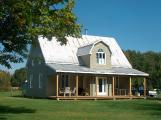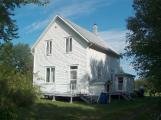1
Samuel William Watson (circa 1800 - 1873)Samuel William Watson trained and worked as a Master Blacksmith in England before emigrating to New Richmond, Quebec around 1821 to work for William Cuthbert. For several years he worked as a nail maker for Cuthbert's ship-building yard on Duthie's Point (sometimes called Shipyard Point). Samuel William Watson married Elizabeth Gilker (1812-1900), the granddaughter of loyalist George Gilker, on January 22nd 1837. At this time Samuel William Watson decided to open a business for himself at the intersection of three important roads in New Richmond. He lived and ran his own blacksmith shop on Ferry Road for years. Samuel William Watson and Elizabeth (Betsy) Gilker had seven children, five daughters and two sons. John William Watson, their only son to live to adulthood, trained as a blacksmith under his father and entered the family trade.
2
The Rebuilt Remains of Samuel William Watson's Home1837
Perron Bolvd., New Richmond, Quebec, Canada
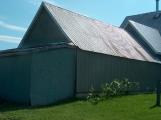
3
This is the re-constructed remains of Samuel William Watson's house. It was moved and re-built by his son John William Watson.4
John William Watson (1840 - 1918)John William Watson moved and re-built the blacksmith shop on Perron Boulevard (then the Queen's Highway) upon inheriting it on his father's death in 1873. He built a new home near it and dismantled his parents house, moving and re-erecting it as an extension of his new home. John William Watson married Selena Doddridge (1840-1892) on the 12th of January 1869. They had eight children, three daughters and five sons. All of their sons trained as blacksmiths under their father in his shop. Three of the boys, James Stevenson, George Alfred Gilker, and Richard Alexander, moved west leaving the area. The other two sons (John Doddridge (Jack) and Hugh Cameron Watson) both maintained connections with the New Richmond community, living and working as blacksmiths in the area.
6
This is a photograph of the house John William Watson built.7
John Doddridge (Jack) Watson (1876 - 1947)John Doddridge (Jack) Watson inherited his father's house and business on his death in 1918. He was a quiet mild mannered man and he worked as a blacksmith in the community shodding horses until his retirement. He was a devoted family man. After the death of his first wife, Margaret Eva Fallow (1881-1904), Jack Watson married Robina Edna Barter-Brash (1875-1950). He had and raised six children. He was interested in the weather and became very good at predicting it. He also became very knowledgeable in the care and maintenance of horses and his advice was often sought in the community when the animals were unwell.
His typical day began at 4 o'clock in the morning and he retired to bed around 8 o'clock in the evening. He worked full-time making and repairing horse shoes and shodding the horse and oxen in the community. He rarely extended his skill in the smithy beyond this work. During the world wars and the depression horses were very common in the area and remained, in many ways, one of the primary means of transportation and were required for work on the farm. Horses were favoured on the coast over automobiles and automotive machinery during these years of poverty and rationing. Consequently Jack Watson made an easy living by shodding the community's horses.
8
Children standing in front of their horse drawn school bus (Jack Watson was the driver)1930
New Richmond, Quebec, Canada
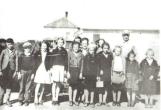
9
This is a photograph of children standing in front of their horse-drawn school bus. Jack Watson was the driver (he is near the back on the right hand side).10
Hauling mud from Goose Lake (Jack Watson is the second figure from the left, near the centre)1910
Goose Lake, Quebec, Canada
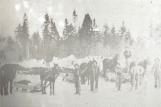
11
Jack Watson is the second figure from the left. In this photograph, he, Howard Gilker, Clint McColm, Herbert Dimock, Bob Cochrane, and Bob Woodman are hauling mud from Goose Lake.13
Hugh Cameron Watson (1881 - 1978)Hugh Cameron Watson, Jack Watson's younger brother, also worked as a blacksmith in New Richmond for a number of years in a smithy of his own located right next to his father's and then brother's shop. Hugh Cameron Watson also trained as a stationary engineer and worked on a number of large scale government initiatives including the first hydro project ever constructed in the province of New Brunswick at Grand Falls. However, government funding for such projects was severely compromised and cut during both the World Wars and during the Great Depression. In these years of hardship he returned to his ancestral home, bought the house next door to his brother, and built and opened up a blacksmith forge of his own.
While his brother, Jack Watson spent his career making horse shoes, Hugh Cameron's efforts were invested in making other products. He was constantly making pevie hooks to help supply the local lumbering and mill industries. In addition to this, he also made farm implements, kitchen ware, sleighs, skies, and toboggans.
